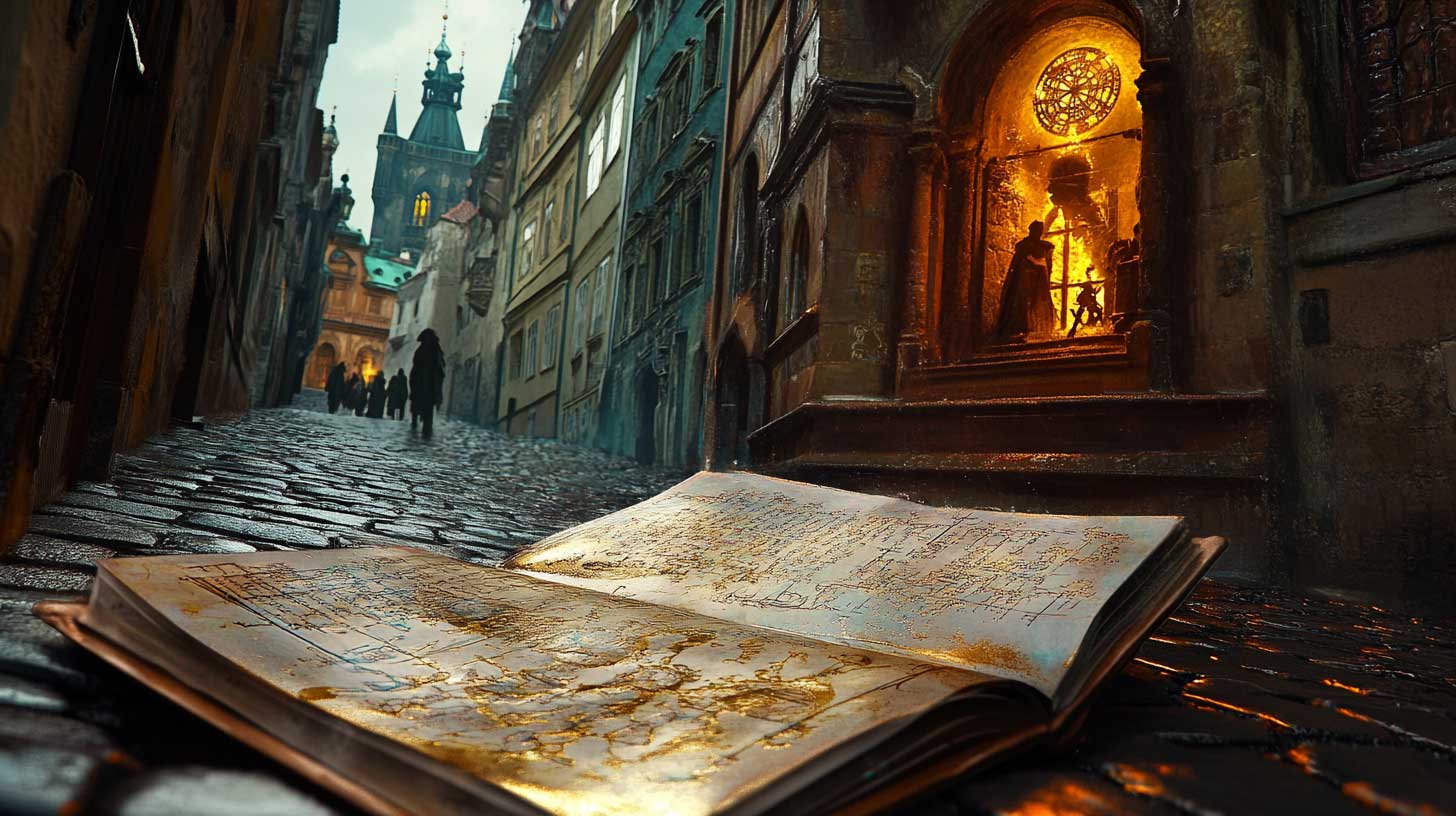
A Guide to Prague’s most Alchemical Alleyways
Let’s explore Prague’s most Alchemical Alleyways in this article. Prague does not merely preserve history; it simmers with it. In the cobblestone veins of its Old Town and the shadowed passages of its castle district, the city feels less like a museum and more like a vast, intricate laboratory where stone itself whispers of failed experiments and elusive truths. This is the city of the Golem, of astrologer-emperors, and of a quest that consumed the brightest and most desperate minds of the Renaissance: alchemy.
To walk Prague with this knowledge is to transform a simple stroll into an act of decoding. What seems like a crooked alley becomes a secret diagram, what looks like a façade becomes a page in an alchemical text. This is your guide to tracing the path of the Magnum Opus—the Great Work—not in books, but in the very streets where it once unfolded.
The Emperor’s Grand Obsession: Rudolf II
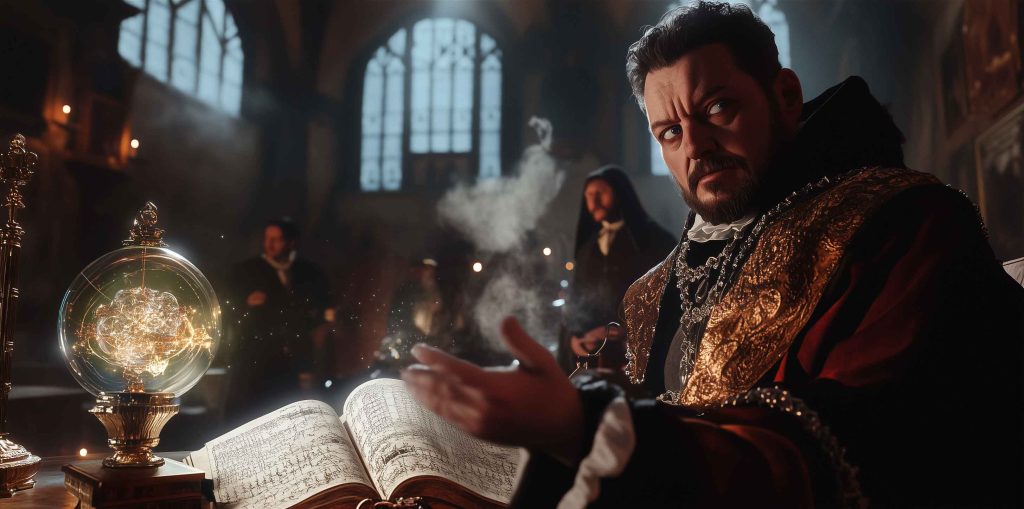
The story of alchemical Prague begins with a man who was as unstable as he was fascinating: Holy Roman Emperor Rudolf II. In the late 16th century, weary of politics and paranoid about enemies, he moved his court from Vienna to the cloistered safety of Prague Castle. There, he turned his energy not toward governance, but toward the occult.
Rudolf became the great patron of the strange and the brilliant. His court was a menagerie of astronomers such as Tycho Brahe and Johannes Kepler, artists, collectors of curiosities—and, most famously, alchemists. He lavished wealth on anyone who promised him two things: the Philosopher’s Stone, said to transmute base metals into gold and grant eternal life, and the Elixir of Life, which would defy mortality itself.
This obsession transformed Prague into a magnet. Geniuses, charlatans, and dreamers flooded in, erecting makeshift laboratories in the streets and courtyards around the castle. For a generation, Prague was the alchemical capital of the world—a place where furnaces glowed through the night and rumors of miracles spread faster than smoke.
Golden Lane: More Than Pretty Houses
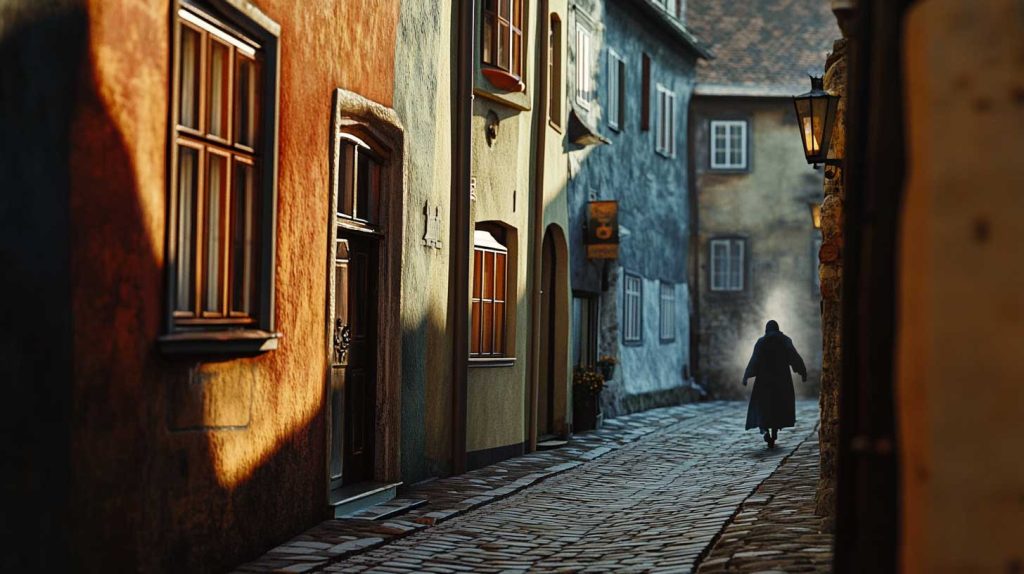
Inside the Prague Castle complex lies Zlatá ulička, the Golden Lane. To modern visitors, it is often dismissed as a picturesque row of doll-sized houses painted in cheerful colors. But to read it that way is to miss its atmosphere.
Legends claim these tiny dwellings once housed Rudolf’s alchemists. While historians debate that point—more likely they were quarters for castle guards known as střelci—the legend fits the lane’s mood. The houses are literally built into the Gothic walls of the castle, giving them a hidden, secretive air. Step onto its cobblestones at dawn or dusk, when tourist chatter fades, and you can almost sense cloaked figures bent over crucibles, sulfur smoke curling from their windows.
Whether or not they truly lived here, Golden Lane has become a symbol of Prague’s alchemical state of mind: a liminal space, half real, half imagined, where transformation always seems possible.
The Old Town Square: A Clockwork Cosmos
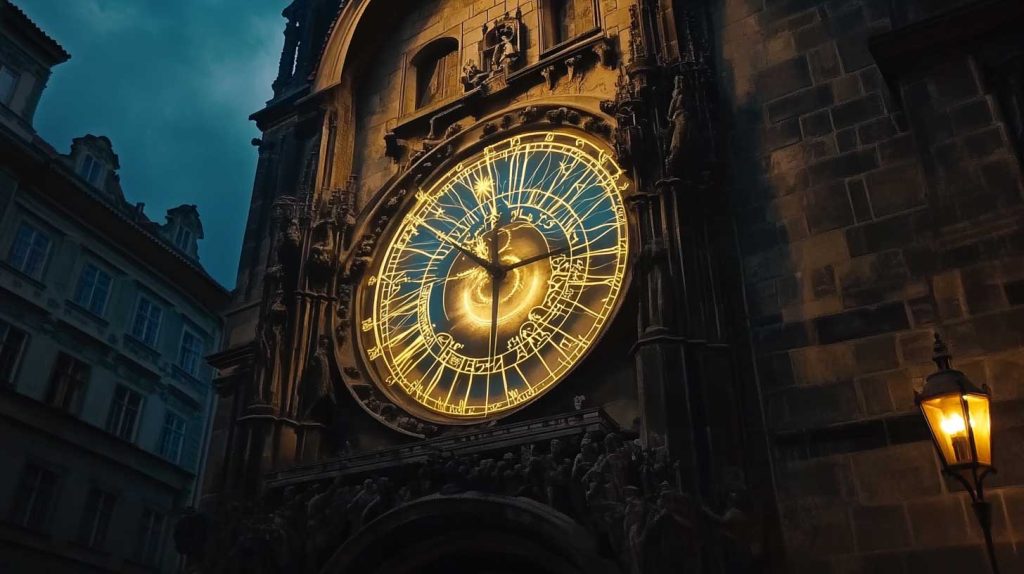
Before venturing deeper into the alleys, you must pause at Prague’s beating heart: the Old Town Square, where the Astronomical Clock (Orloj) presides over centuries.
Installed in 1410, the clock is more than a timekeeper—it is a mechanical model of the universe, a Renaissance worldview in motion. To alchemists, it represented their entire philosophy: the marriage of the cosmic and the earthly.
- The Astronomical Dial charted sun and moon through the zodiac, crucial for determining auspicious moments to begin experiments.
- The Calendar Dial displayed the labors of the months, reminding adepts of the cycles of matter and life.
- The Moving Apostles appeared each hour as a reminder of spiritual transformation—the soul’s journey mirroring the transmutation in the flask.
The clock embodies the alchemical maxim “As above, so below.” To read its dials was to glimpse one’s place in a cosmic dance, and to believe that what turned in the heavens could also turn in the furnace.
Vlašská Street: The Alchemists’ Alleyway
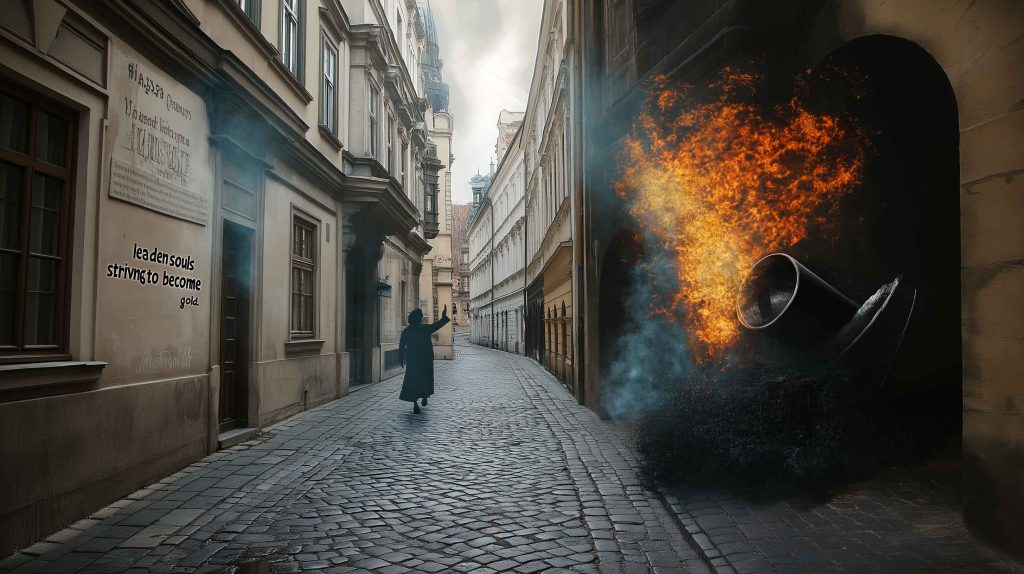
Descend from the castle into the maze of Malá Strana, and seek out Vlašská Street. Locals once called it the “Street of Alchemists,” and though that title is half-romance, half-truth, the atmosphere is unmistakable. The narrow street, shielded from direct sun, feels heavier, as if weighed down by the residue of fire and smoke.
It was here that Rudolf welcomed two of the era’s most notorious figures: Edward Kelley and John Dee, Englishmen whose reputations balanced between brilliance and fraud. Dee was a mathematician and astrologer of genuine talent, while Kelley claimed to summon angels through crystal scrying and promised to manufacture gold. Both became entangled in scandal, but in Prague their names still echo like cautionary incantations.
In alchemical symbolism, Vlašská Street embodies nigredo—the stage of blackening, when matter is broken down, dissolved, and putrefied. Fires were constant, explosions common. What was sought was not merely metal transmutation, but inner transfiguration: leaden souls striving to become gold.
The House at the Stone Ram: A Façade of Secrets
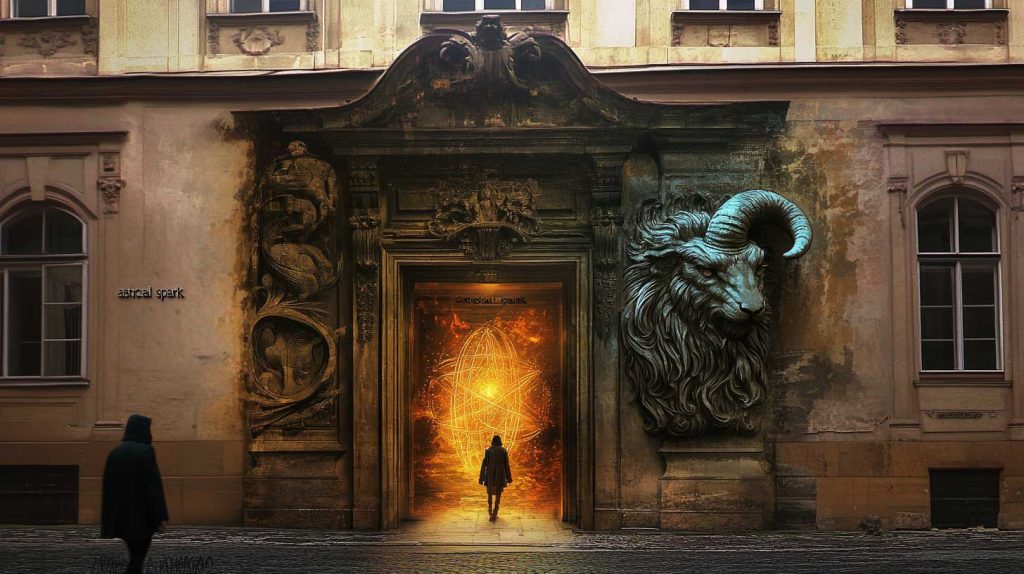
In Prague, every carved stone may conceal a code. On Husova Street, the House at the Stone Ram (U Kamenného beránka) wears its mysteries openly.
Above the doorway, a bas-relief shows a Green Lion devouring the sunlit vine, with a Ram’s head overseeing the scene. To the untrained eye, it is decorative. To the initiate, it is a page from an alchemical manual.
- The Green Lion represents a corrosive agent—often associated with aqua regia—powerful enough to dissolve even gold.
- The Ram (Aries) marks beginnings, fiery creation, and the astrological spark needed to start the Work.
These were not ornaments for charm’s sake. They were declarations: signals to fellow seekers, talismans to attract cosmic favor. The building itself becomes an experiment, its façade an encoded invocation.
How to Walk the Path of the Adept
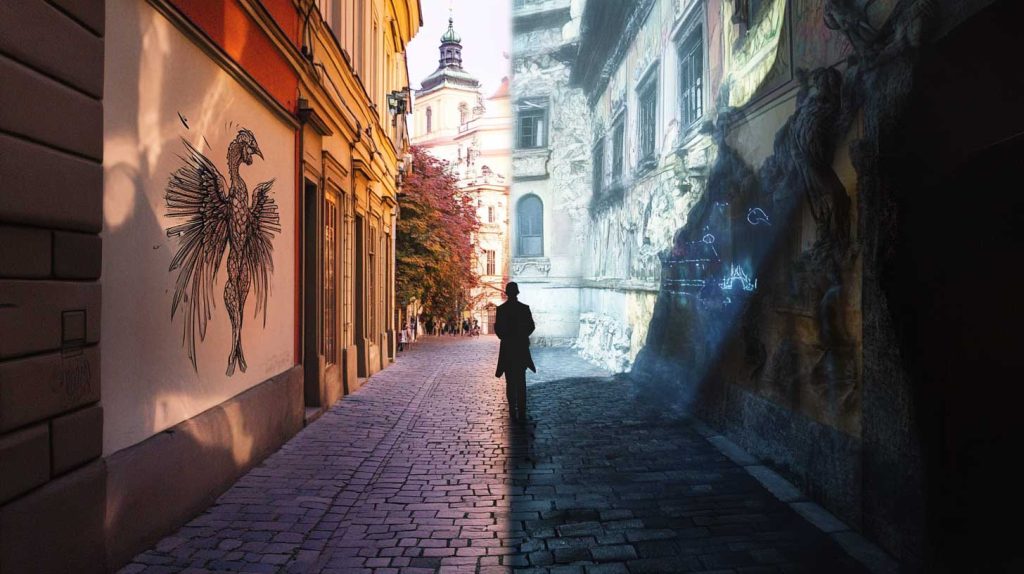
To explore Prague’s alchemical alleyways is to adopt the mindset of the seeker. Here are the principles:
- Timing is Everything. Visit at dawn or dusk. Shadows lengthen, noise subsides, and the city folds back into the texture of the 16th century.
- Look for the Symbols. A phoenix carved into a lintel, a pelican feeding its young with its own blood, a dragon at a drainpipe—all fragments of a larger language.
- Embrace the Labyrinth. Abandon the map. Prague’s alleys do not follow rational grids. The most profound discoveries come from wrong turns and blind passages.
- Consider a Guide. Esoteric specialists can reveal symbols you’d pass unknowingly, turning a wall into a text and a street into a parable.
Prague as the Philosopher’s Stone
In the end, Prague’s alchemical heritage is not about literal gold. The Philosopher’s Stone was never found in a furnace—but in a sense, it was found in the city itself. The pursuit of the impossible transformed Prague into something singular: a city that feels alive with mystery, saturated with symbolism, and impossible to reduce to mere history.
Walk its crooked streets with an open mind, and Prague will reveal itself as the Philosopher’s Stone incarnate: a place where the base becomes precious, where failures become myths, and where centuries of seeking have transmuted stone into legend.









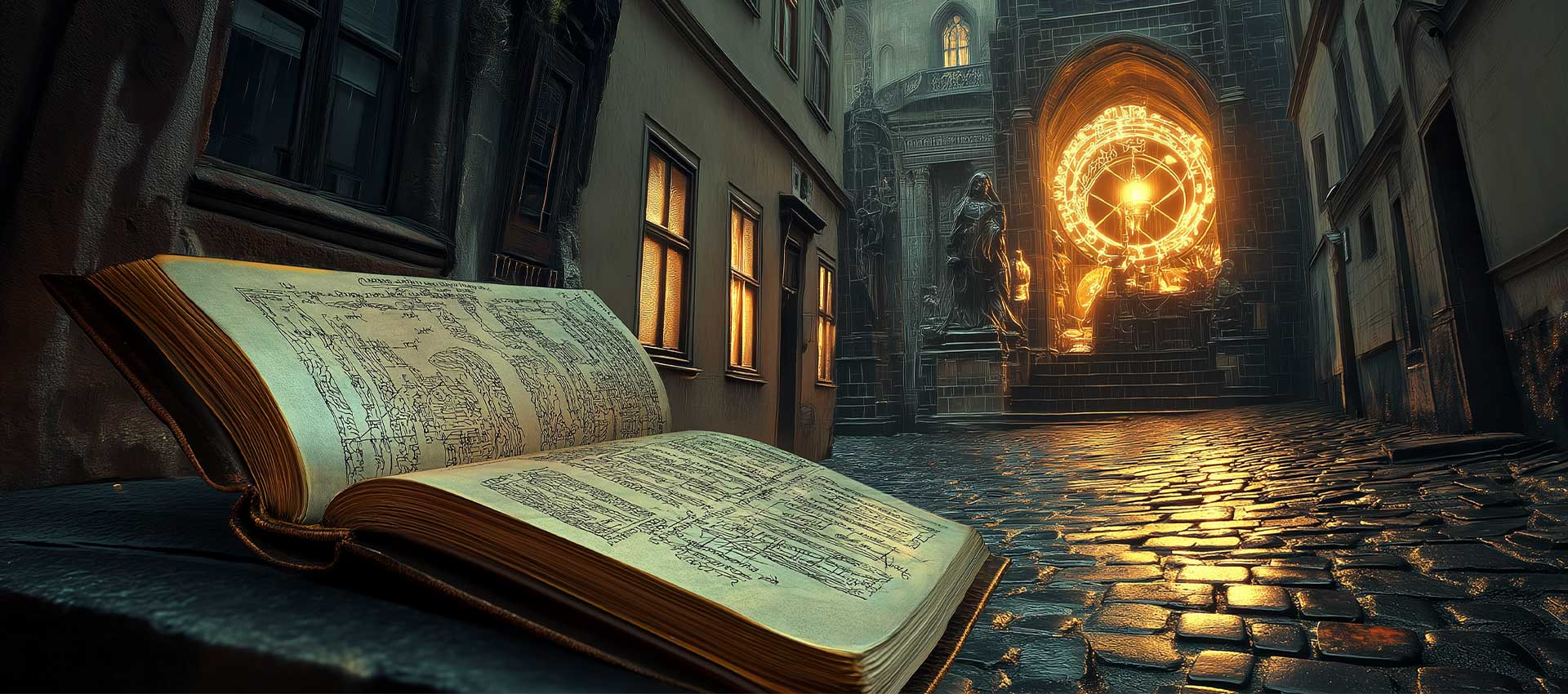
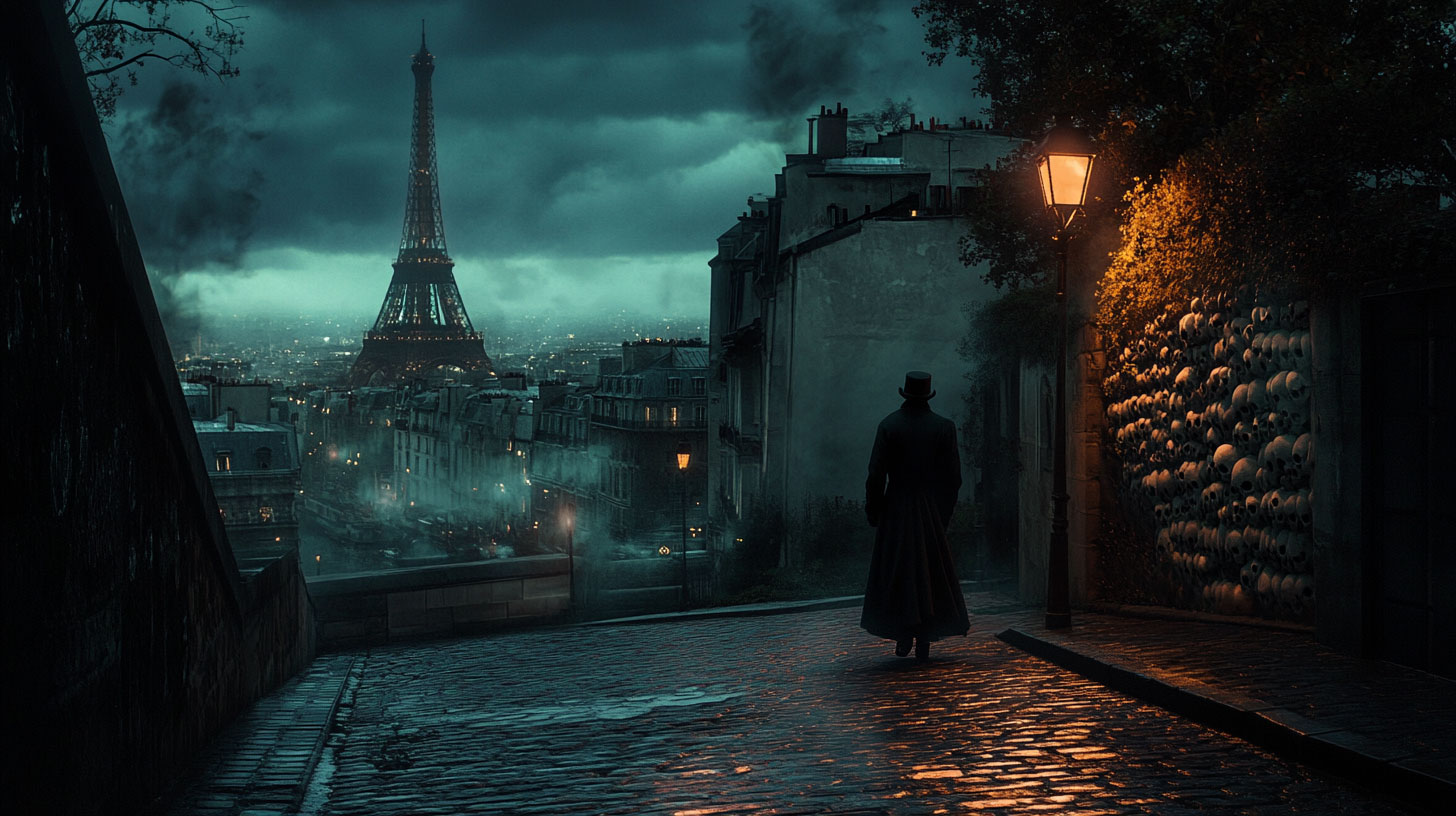
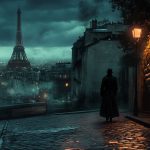
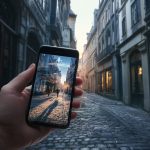
No Comments